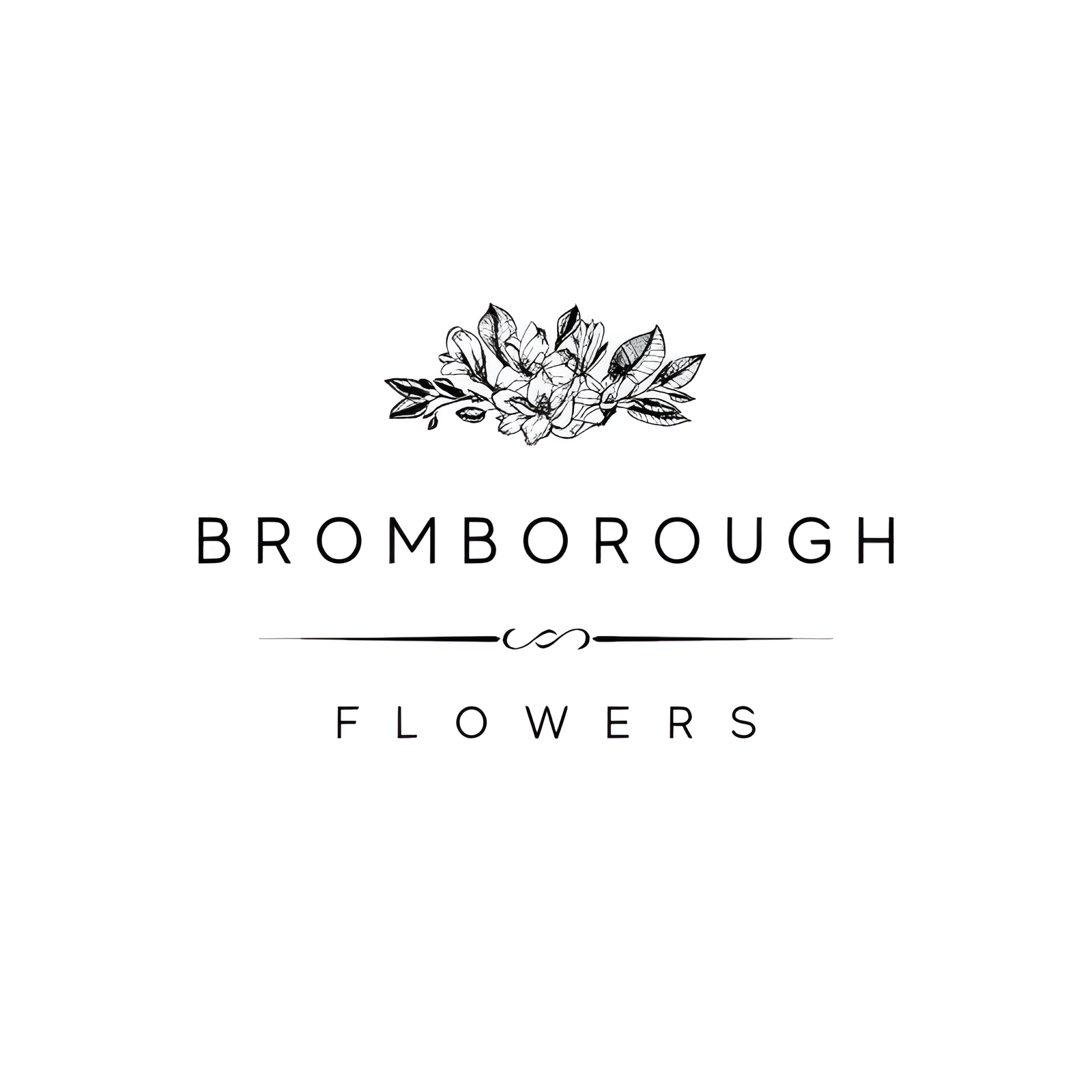The dahlia, with its striking layers of waxy petals and extensive color palette, stands as a symbol of love, purity, and sophistication, making it a perfect choice for wedding bouquets. Originating from Mexico and Central America, this flower thrives in summer to fall, offering rich hues and varied sizes that suit any bridal theme. As we explore the dahlia’s physical characteristics, cultural significance, and best growing conditions, it becomes apparent why this flower has captivated the hearts of many. What unique qualities set dahlias apart from other popular wedding flowers?
Flower Overview
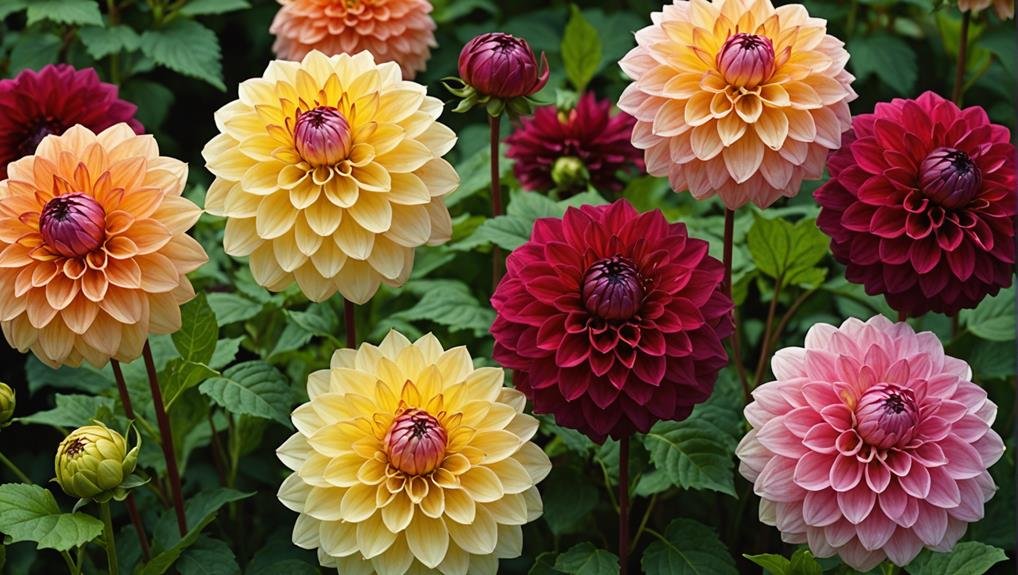
Dahlias, indigenous to Mexico and Central America, boast a rich history and vibrant aesthetic that dates back to the Victorian Era. These flowers have earned admiration for their vivid, cheerful blooms, making them a highly sought-after choice for wedding bouquets. Dahlias are renowned for their wide range of vibrant colors, which include fifteen base shades and over sixty bi-color varieties. This diverse palette ensures that dahlias can seamlessly complement a wide array of wedding color schemes, adding a touch of grace and allure to any nuptial celebration.
In addition to their striking appearance, dahlias bloom from summer to fall, aligning perfectly with the wedding season. Their seasonal availability guarantees that they remain a popular choice for brides and wedding planners aiming to create stunning floral arrangements. Moreover, when properly cared for, dahlias can be a budget-friendly option. This cost-effectiveness, combined with their beauty, makes them an ideal floral choice for those looking to maximize visual impact without overspending.
With the ability to create enchanting and colorful wedding bouquets, dahlias stand as a tribute to nature’s artistry and a timeless symbol of love and celebration.
Physical Description
Exhibiting a diverse array of forms and sizes, the physical characteristics of dahlia flowers range from compact pompons to large, dinner-plate varieties. The intricate structure of these blooms is marked by their layers of waxy petals, which contribute to their vibrant and cheerful appearance. This structural variety makes dahlias a versatile choice for wedding bouquets, allowing for a mix of shapes and sizes to suit various aesthetic preferences.
Dahlias’ unique physical description includes a wide range of petal arrangements, from tightly bound spherical forms to more open, daisy-like configurations. The petals themselves are often thick and slightly shiny, giving the flowers a robust and luxurious feel. Despite their stunning visual appeal, dahlias are somewhat delicate, particularly when it comes to transportation and vase life. Their fragility underscores the need for careful handling, especially when incorporated into wedding bouquets.
In terms of size, dahlias can vary significantly, with some blooms reaching impressive diameters, making them standout focal points in floral arrangements. This size variation allows florists to craft wedding bouquets with depth and texture, incorporating both large, eye-catching blooms and smaller, complementary flowers.
Available Colour Varieties
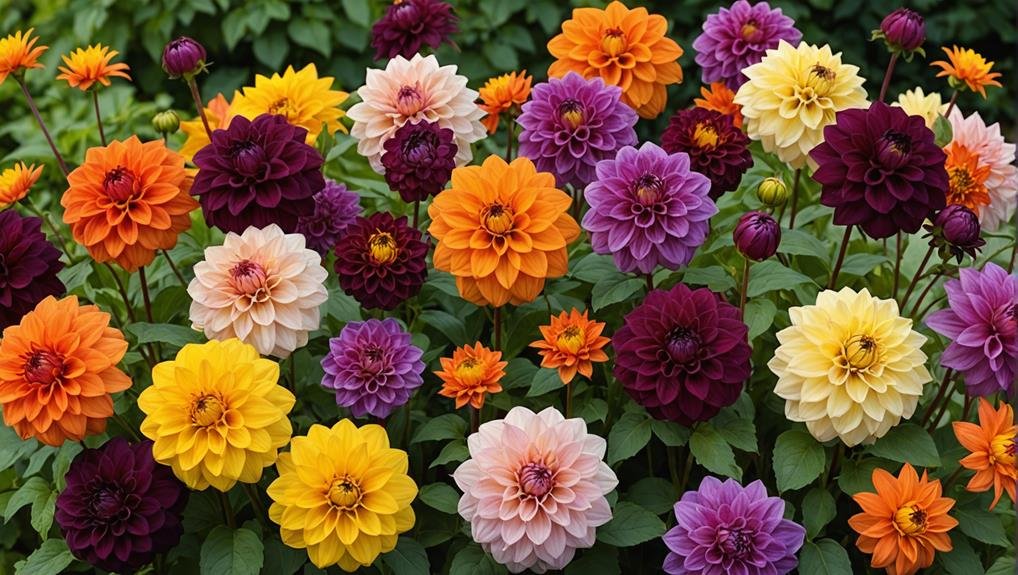
Offering a palette of fifteen base colors and more than sixty bi-color variations, dahlias provide an extensive array of options for wedding bouquets. Among the most sought-after hues are the classic shades of white, pink, and purple. Their ability to blend seamlessly into various color schemes makes them a versatile choice for wedding arrangements.
The vibrant orange dahlias, for instance, add a burst of color that can energize any bouquet, while the round shape of the blooms creates a sense of fullness and symmetry.
The bi-color varieties of dahlias bring an added layer of complexity and charm to floral designs. These varieties often feature alluring combinations, such as lighter tips that shift to darker centers, which add depth and visual interest. This characteristic makes them ideal for creating dynamic and eye-catching bouquets that stand out.
Dahlias’ extensive color range allows for customization and creativity in wedding floral arrangements. Here are some of the emotional appeals they offer:
- Romantic pinks and purples: Evoke feelings of love and ardor.
- Elegant whites: Symbolize purity and everlasting beauty.
- Vibrant orange dahlias: Infuse vitality and enthusiasm.
- Intriguing bi-color varieties: Add refinement and individuality.
Incorporating dahlias into wedding bouquets guarantees a stunning and unforgettable floral display.
Latin Name and Taxonomy
The Latin name for the dahlia, Dahlia spp., reflects its classification within the diverse and expansive family Asteraceae. This family, which also includes sunflowers and daisies, underscores the dahlia’s botanical richness and versatility. Named in honor of the Swedish botanist Anders Dahl, a student of the renowned Carl Linnaeus, dahlias were officially recognized in the 18th century. Dahl’s contributions to botany, and his connection to Linnaeus, highlight the historical significance and scientific heritage of these vibrant flowers.
Taxonomically, dahlias are classified under the plant kingdom, order Asterales, and class Magnoliopsida. This classification includes various species and hybrids, with over 42 different species acknowledged. The diversity within Dahlia spp. is remarkable, with flowers displaying a myriad of colors, shapes, and sizes. This extensive variation makes dahlias a popular and versatile choice for floral arrangements, especially in wedding settings.
The taxonomy of dahlias not only emphasizes their botanical diversity but also their adaptability to different horticultural practices. Their rich colors and extensive species range allow for endless creative possibilities, making them an essential component in the world of ornamental horticulture and floral design.
Geographical Origins
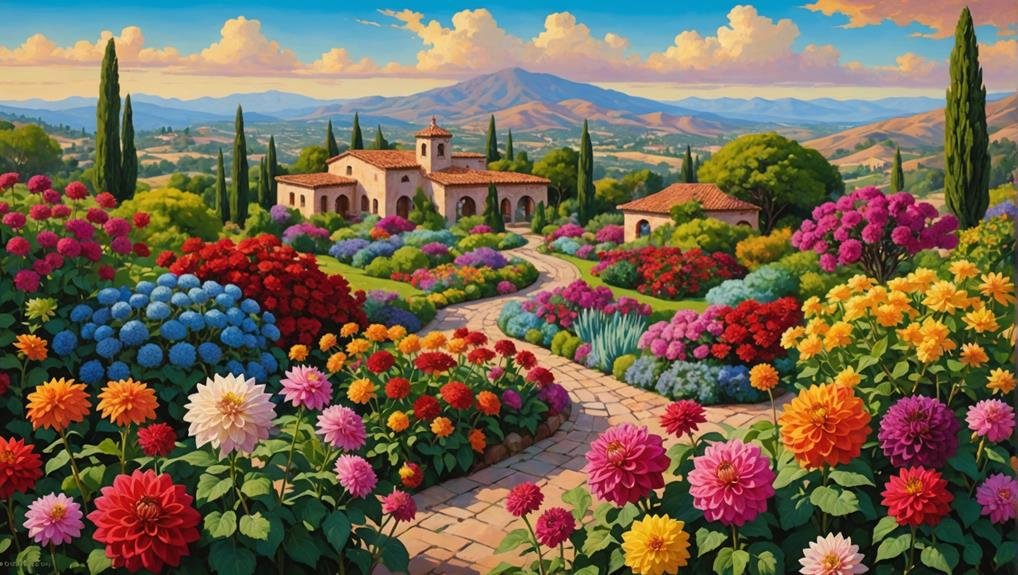
Originating from the rich and diverse landscapes of Central America, Colombia, and Mexico, dahlias have a storied history that spans both cultural significance and horticultural development. These vividly colored flowers, often seen gracing rustic bouquets, were highly valued by the Aztecs for various purposes, including food, ceremonies, and decoration. Their journey to global popularity began in the late 18th century when botanist Anders Dahl, after whom the flower is named, played a pivotal role in their introduction to Europe.
In 1791, a few dahlia seeds were sent to England, marking the beginning of their widespread cultivation and appreciation. The modern varieties of dahlias that we cherish today are the result of extensive crossbreeding, primarily with a surviving red variety. This botanical endeavor has led to an astonishing array of shapes, sizes, and colors, making dahlias a versatile and cherished choice for weddings and other special occasions.
- Breathtaking colors: From deep reds to pastel pinks, dahlias offer an impressive palette.
- Cultural heritage: Symbolizing grace and inner strength, they connect us to ancient traditions.
- Versatility: Perfect for both elegant and rustic bouquet arrangements.
- Botanical marvel: Reflecting centuries of horticultural innovation and dedication.
Season Availability
Dahlias, with their rich hues and varied forms, thrive from summer to fall, making them an ideal choice for seasonal wedding arrangements. Their bloom time aligns perfectly with the peak wedding season, offering brides and grooms the opportunity to incorporate these stunning flowers into their celebrations.
The vibrant and diverse wedding colors available in dahlias, ranging from deep purples and reds to soft pinks and whites, provide endless possibilities for creating a striking Dahlia wedding bouquet.
One of the significant advantages of using dahlias in wedding arrangements is their long-lasting nature. This ensures that the floral displays remain fresh and beautiful throughout the event. Additionally, the seasonal availability of dahlias can make them a cost-effective option for couples, as they are more accessible and affordable during their peak bloom time.
Dahlias pair exceptionally well with other summer blooms, offering a plethora of options for creating colorful and harmonious arrangements. Their ability to blend seamlessly with various wedding colors guarantees that they can complement any wedding theme, from rustic to elegant.
Growing Conditions
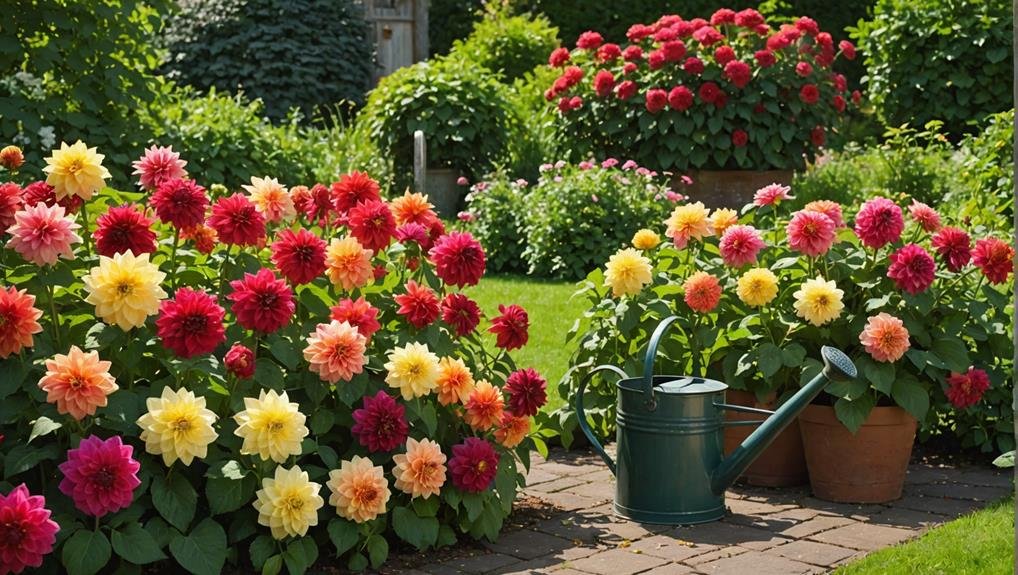
To fully appreciate the beauty and longevity of dahlias in wedding arrangements, understanding their ideal growing conditions is essential. Dahlias thrive in full sun, needing at least 6-8 hours of sunlight daily for best growth. This guarantees that the blooms achieve their characteristic vibrant shades, perfect for adding a touch of sophistication and color to your special day.
Well-draining soil, rich in organic matter, is another fundamental element for cultivating these flowers. It is optimal to plant dahlias after the last frost date in your area, as they are sensitive to cold temperatures. Spacing of about 1.5 to 2 feet between plants allows for proper air circulation and promotes strong growth throughout their long growing season. Regular watering is also vital, with the soil needing to be kept consistently moist but not waterlogged.
By following these growing guidelines, you can ensure that the dahlias will be in prime condition for your wedding arrangements, offering their full magnificence and lasting beauty.
- Imagine reveling in a garden of vibrant hues.
- Embrace the grace of dahlias for your special day.
- Experience the delight of a long growing season.
- Witness the unmatched beauty of well-grown dahlias.
Cultural Significance
Understanding the cultural importance of dahlias reveals their deep historical roots and symbolic meanings, enriching their appeal as a choice for wedding arrangements. Originating from Central America, dahlias were cherished by the Aztecs, who utilized the flowers for various purposes such as food, ceremonial rituals, and ornamental decoration. This early cultural importance laid the foundation for dahlias’ extensive journey through history.
In the 18th century, dahlias were named after the Swedish botanist Anders Dahl. Their introduction to England in 1791 marked the beginning of their global dissemination. Initially, only a few seeds made their way to European gardens, but the surviving red variety became the progenitor of the myriad dahlia forms we see today through extensive crossbreeding.
The Victorian Era further solidified the dahlia’s cultural significance. During this period, the flower symbolized love, beauty, dignity, and devotion—qualities highly valued in Victorian society. These symbolic meanings have endured, making dahlias a popular flower for weddings and other special occasions.
The rich history and diverse symbolism of dahlias contribute noticeably to their continued popularity and cultural relevance in modern floral arrangements.
Typical Use in Weddings
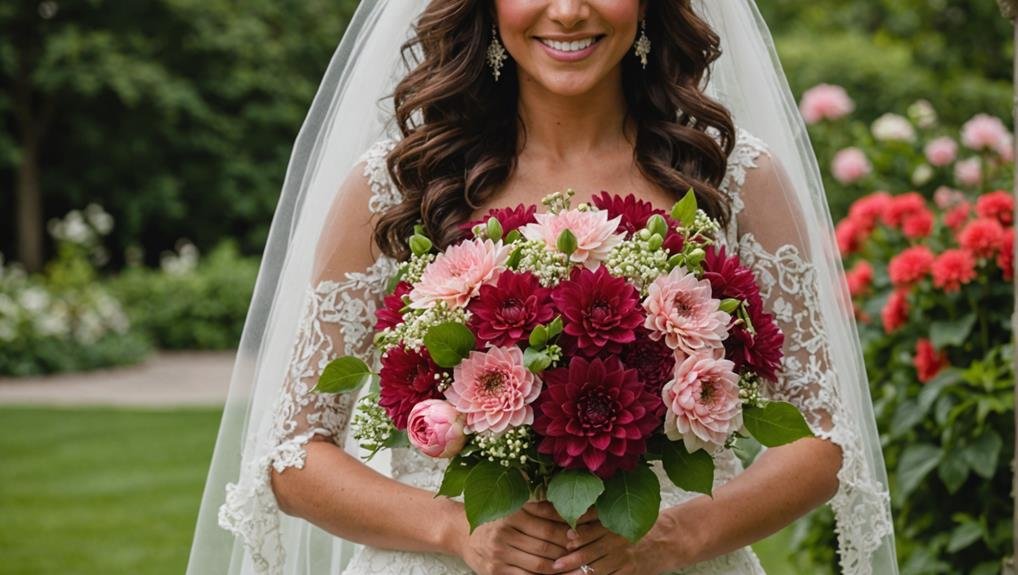
Building on their rich cultural significance, dahlias have become a staple in wedding arrangements, celebrated for their vibrant colors and versatile beauty. A dahlia bouquet brings a touch of romance and sophistication to bridal arrangements, often featuring a mix of cafe Au lait dahlias, roses, and garden flowers. These combinations create a stunning, diverse look that captivates and complements various wedding themes.
Dahlias are known for their large blooms and delicate appearance, making them a favorite choice for weddings. Their flexibility allows them to be seamlessly incorporated into different bouquet styles, from classic and organic to bold and colorful designs. The variety of shapes and hues available guarantees that there is a perfect dahlia for every bride’s vision.
The typical use of dahlias in weddings can evoke powerful emotions, making each bouquet a memorable part of the celebration. Consider the following aspects:
- A dahlia bouquet exudes elegance and timeless beauty.
- Their vivid colors can symbolize the joy and passion of the wedding day.
- The large, intricate blooms add a unique touch to any bridal arrangement.
- Dahlias’ adaptability allows for personalized, creative bouquet designs.
Alternative Flower Types
When considering alternative flower types to complement dahlias in wedding bouquets, options like peonies, roses, and ranunculus offer a harmonious blend of textures and colors. These flowers can enhance the visual appeal and depth of your floral arrangement, making dahlias for your big day even more stunning.
In addition to these classics, incorporating lilies, hydrangeas, or orchids provides a diverse and visually appealing bouquet arrangement. Each brings its unique charm; for instance, lilies add elegance, hydrangeas contribute volume, and orchids offer an exotic touch.
Experimenting with sunflowers, tulips, or carnations can also add a unique touch to your wedding floral arrangements. Sunflowers bring a cheerful burst of color, tulips offer a sleek and modern look, and carnations provide a long-lasting, budget-friendly option.
To further enhance the overall look and feel of your bouquet, consider adding baby’s breath, asters, or eucalyptus. Baby’s breath offers a delicate, airy feel, asters add a pop of vibrant color, and eucalyptus introduces a revitalizing greenery that can complement your wedding theme seamlessly.
Ultimately, mixing and matching different flower types allows you to create a personalized and stunning bouquet that perfectly suits your wedding theme and style.
